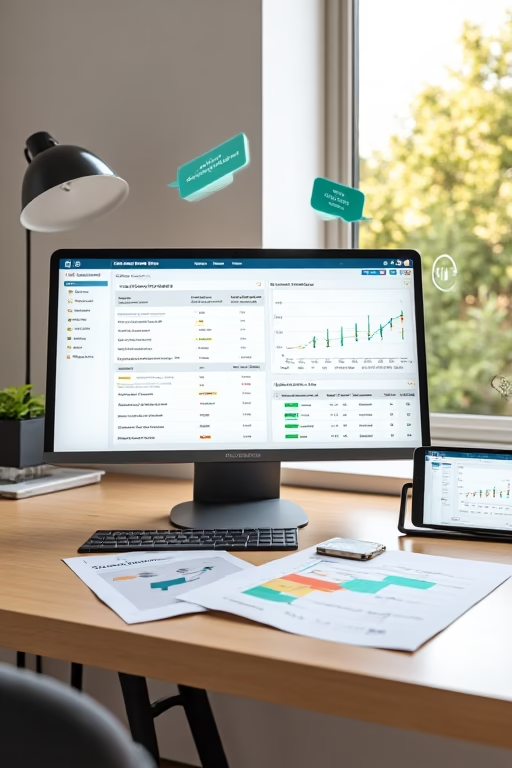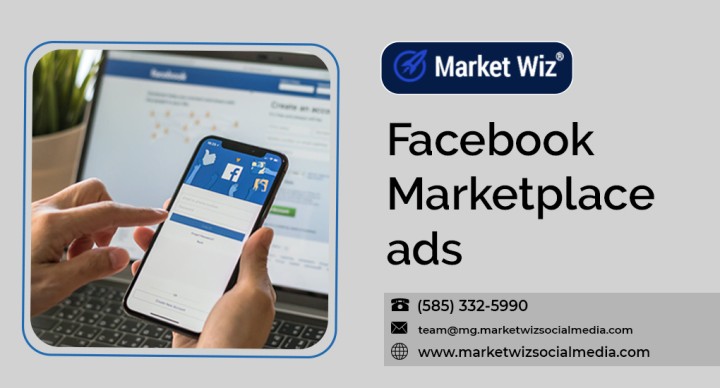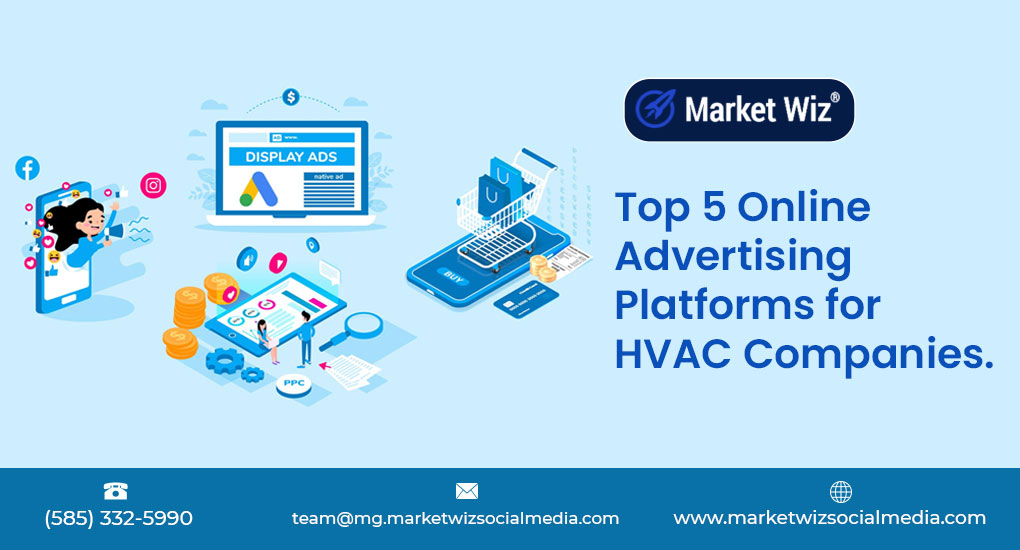Lead Generation ROI: What’s Really Worth Your Time?
Maximizing Return on Your Lead Efforts by Market Wiz AI
Table of Contents
- Introduction: Lead Generation ROI: What’s Really Worth Your Time?
- 1. Understanding Lead Generation ROI
- 1.1 What Is ROI in Lead Generation?
- 1.2 Why ROI Matters More Than Volume
- 1.3 Common Misconceptions
- 2. Measuring ROI: Metrics & Tools
- 2.1 Cost Per Lead (CPL)
- 2.2 Customer Acquisition Cost (CAC)
- 2.3 Lifetime Value (LTV)
- 2.4 ROI Formula and Benchmarks
- 3. High-ROI Lead Gen Channels
- 3.1 Content Marketing & SEO
- 3.2 Email Marketing & Nurture Campaigns
- 3.3 Social Media Advertising
- 3.4 Referral & Affiliate Programs
- 3.5 Webinars & Virtual Events
- 4. Low-ROI Channels to Avoid
- 4.1 Broad Display Ads
- 4.2 Paid Directory Listings
- 4.3 Generic PPC Keywords
- 4.4 Unqualified List Rentals
- 5. Optimizing for Maximum ROI
- 5.1 Audience Segmentation
- 5.2 A/B Testing Landing Pages
- 5.3 Marketing Automation & Chatbots
- 5.4 Data-Driven Decision Making
- 6. Case Studies: Real-World ROI Wins
- 6.1 B2B SaaS Example
- 6.2 Local Service Example
- 7. Conclusion & Next Steps
- 8. 25 FAQs
- 9. 25 Extra Keywords
Introduction: Lead Generation ROI: What’s Really Worth Your Time?
Lead Generation ROI: What’s Really Worth Your Time? kicks off by acknowledging a truth most marketers face: not all leads are created equal. Chasing volume can drain budgets and distract from strategies that truly drive revenue. In this post, Market Wiz AI breaks down how to measure and compare ROI across channels, identify high-impact tactics, and allocate your efforts where they count most—so you stop spinning wheels and start closing deals.
1. Understanding Lead Generation ROI
1.1 What Is ROI in Lead Generation?
Return on Investment (ROI) for lead gen compares revenue gained from new customers against costs spent to acquire those leads. It’s not just about how many leads you get, but how much value each lead delivers in the long run.
1.2 Why ROI Matters More Than Volume
High lead volume can create false optimism if quality is poor. A small batch of qualified, ready-to-buy leads trumps thousands of unqualified prospects—ROI focuses on profitability, not vanity metrics.
1.3 Common Misconceptions
- “More leads = more sales”: Quantity without targeting often raises costs per sale.
- “All channels perform equally”: Each channel has its own cost structures and conversion dynamics.
- “ROI is a one-time calculation”: Ongoing measurement and optimization shift the numbers over time.
2. Measuring ROI: Metrics & Tools
2.1 Cost Per Lead (CPL)
CPL = Total Lead Gen Spend ÷ Number of Leads. A lower CPL indicates more efficient lead acquisition, but must be balanced against lead quality.
2.2 Customer Acquisition Cost (CAC)
CAC = Total Sales & Marketing Spend ÷ Number of New Customers. CAC captures the full cost to convert a lead into a paying customer.
2.3 Lifetime Value (LTV)
LTV estimates total revenue a customer generates over their relationship with your company. Comparing LTV vs. CAC helps determine sustainable budgets.
2.4 ROI Formula and Benchmarks
ROI = (Revenue – Spend) ÷ Spend × 100%. Aim for a minimum 3:1 revenue-to-spend ratio in B2C and 5:1 in B2B contexts, adjusting for margins and business model.
3. High-ROI Lead Gen Channels
3.1 Content Marketing & SEO
Building evergreen content—how-to guides, industry insights—attracts qualified traffic long after launch. Organic leads cost little per click and convert at higher rates when optimized for intent.
3.2 Email Marketing & Nurture Campaigns
Re-engaging existing contacts through segmented email flows drives repeat leads at minimal incremental cost. Automation tools deliver timely, relevant messages that nurture prospects down the funnel.
3.3 Social Media Advertising
Platforms like LinkedIn and Facebook enable granular targeting. Focus spend on lead gen formats—Lead Ads, InMail—and retargeting visitors who engaged with high-value content.
3.4 Referral & Affiliate Programs
Leveraging partner networks or satisfied customers to refer new business often yields high-quality leads. Pay-per-lead or rev-share models align incentives and keep costs predictable.
3.5 Webinars & Virtual Events
Hosting niche webinars attracts decision-makers actively seeking solutions. While production has upfront costs, attendee CPL can be significantly lower than paid ads, with strong engagement and conversion rates.
4. Low-ROI Channels to Avoid
4.1 Broad Display Ads
Untargeted banner and programmatic placements often generate clicks but low conversions, draining budgets without clear attribution.
4.2 Paid Directory Listings
Generic directory or list-based leads can be expensive and competitive, with limited visibility into lead intent or conversion outcomes.
4.3 Generic PPC Keywords
Bid on high-volume, low-intent keywords (e.g., “service near me”) cautiously—these queries may not translate to qualified inquiries without precise match types and negative keyword strategies.
4.4 Unqualified List Rentals
Purchasing email or contact lists without opt-in often leads to poor engagement, high bounce rates, and potential compliance issues.
5. Optimizing for Maximum ROI
5.1 Audience Segmentation
Divide your market by firmographic, demographic, and behavioral traits. Tailor messaging and offer depth to each segment to boost conversion efficiency.
5.2 A/B Testing Landing Pages
Test headlines, form lengths, and CTAs. Small improvements in conversion rate can compound to large ROI gains over volume.
5.3 Marketing Automation & Chatbots
Automate lead qualification through chatbots and Drip/HubSpot sequences. Instant responses increase engagement and reduce drop-off.
5.4 Data-Driven Decision Making
Use dashboards (e.g., Google Analytics, CRM reports) to monitor CPL, CAC, and LTV in real time. Reallocate budget weekly to top-performing channels.
6. Case Studies: Real-World ROI Wins
6.1 B2B SaaS Example
A SaaS provider cut CAC by 40% by shifting 30% of paid spend into targeted webinars and email nurture—resulting in a 6:1 ROAS over six months.
6.2 Local Service Example
A home services company reduced CPL by 50% by optimizing Google Local Services Ads and leveraging referral incentives—doubling booked leads at half the budget.
7. Conclusion & Next Steps
Evaluating Lead Generation ROI: What’s Really Worth Your Time? requires a blend of precise measurement, channel prioritization, and continuous optimization. Follow these steps to sharpen your strategy:
- Audit all lead gen channels: calculate CPL, CAC, and LTV.
- Reallocate spend toward high-ROI tactics like content, email, and referrals.
- Implement automation for faster qualification and nurturing.
- Test and iterate landing pages and messaging monthly.
- Use real-world benchmarks and case studies to inform decisions.
By focusing on ROI over raw volume, you’ll invest time and budget where it truly pays off—driving sustainable growth and maximizing every marketing dollar.
8. 25 Frequently Asked Questions
1. What is lead generation ROI?
Lead generation ROI measures revenue from new customers against the costs spent acquiring those leads, expressed as a percentage or ratio.
2. How do I calculate CPL?
CPL (Cost Per Lead) = Total Lead Gen Spend ÷ Number of Leads. It indicates efficiency in acquiring new contacts.
3. What’s the difference between CPL and CAC?
CPL focuses on cost to acquire a lead, while CAC (Customer Acquisition Cost) measures cost to convert a lead into a paying customer.
4. Why is LTV important?
LTV (Lifetime Value) estimates total revenue a customer generates over their entire relationship, helping set sustainable acquisition budgets.
5. Which channels have the highest ROI?
Typically content marketing, email nurture, referrals, and targeted webinars deliver the strongest ROI when executed well.
6. Are paid ads always low-ROI?
Not necessarily—highly targeted PPC and social ads can yield strong returns if optimized for intent and paired with conversion-focused landing pages.
7. How often should I review my metrics?
Weekly for CPL/CAC trends and monthly for deeper analysis of ROI, LTV, and channel performance shifts.
8. What tools help track lead ROI?
Google Analytics, CRM systems (HubSpot, Salesforce), and BI dashboards (Looker, Data Studio) aggregate data for comprehensive ROI tracking.
9. How do I improve a high CPL?
Refine targeting, improve ad copy, test different offers, optimize landing pages, and shift budget to better-performing channels.
10. Can I track offline conversions?
Yes—use unique phone numbers, promo codes, or CRM data entry to attribute offline sales back to online lead sources.
11. How do I choose between channels?
Compare CPL, CAC, conversion rate, and alignment with audience behavior. Prioritize channels that meet your ROI benchmarks and scale effectively.
12. What’s a good benchmark for CAC?
Varies by industry: B2C often ranges $30–$100, B2B $150–$500+. Compare against LTV to ensure profitability.
13. Should I stop low-ROI channels entirely?
Pause or reduce budgets, but consider testing optimizations—better targeting or creative—before abandoning completely.
14. How do referral programs impact ROI?
Referral leads typically convert at higher rates and lower CPL, boosting overall ROI when structured with clear incentives.
15. Are webinars expensive to run?
They require planning and promotion but can be cost-effective—especially when repurposed as on-demand content for continuous lead capture.
16. How long until I see ROI improvements?
Initial gains in CPL and CAC can appear within 4–6 weeks of optimization, with full ROI impact over 3–6 months.
17. How do I balance short-term and long-term ROI?
Allocate a mix: short-term tactics (PPC, retargeting) for immediate leads and long-term investments (SEO, content) for sustained ROI.
18. Can automation hurt ROI?
If misconfigured, yes—spammy chatbots or over-automated emails can damage brand perception. Test flows carefully and monitor engagement.
19. How important is creative in lead ROI?
Very—compelling ad copy and visuals improve click-through and conversion rates, directly impacting CPL and CAC.
20. What is a good ROAS target?
3:1 or higher for B2C; 5:1 or higher for B2B. Adjust for margins and business model nuances.
21. How do I incorporate LTV into my budget?
Set CAC targets as a percentage of LTV—e.g., CAC should not exceed 20–30% of LTV—to ensure sustainable growth.
22. What role does SEO play in ROI?
SEO delivers organic traffic at near-zero incremental cost, with compounding ROI over time as content ranks and attracts qualified leads.
23. How do I test new channels?
Start with a small budget, track CPL and conversion metrics, compare to benchmarks, and scale only channels that meet ROI criteria.
24. How do I present ROI data to stakeholders?
Use clear dashboards showing CPL, CAC, LTV, and ROAS trends. Highlight wins and outline steps for underperforming areas.
25. Where can I learn more about lead gen ROI?
Visit Market Wiz AI’s blog for in-depth tutorials, downloadable ROI calculators, and advanced case studies. Download our “Lead Gen ROI Toolkit” for templates and best-practice guides.
9. 25 Extra Keywords
- lead gen ROI benchmarks
- measuring lead generation ROI
- cost per lead vs customer acquisition cost
- high ROI lead channels
- optimize lead generation spend
- lead generation metrics 2025
- email nurture ROI
- content marketing ROI
- webinar lead ROI
- referral program ROI
- SEO vs PPC ROI
- marketing automation ROI
- landing page conversion optimization
- social media ad ROI
- CRM data for ROI
- ROI dashboard tools
- lead quality vs quantity
- benchmark CAC by industry
- calculate LTV easily
- low cost lead strategies
- display ad ROI analysis
- paid directory ROI
- optimize CPL
- A/B testing ROI
- Market Wiz AI lead ROI guide

















